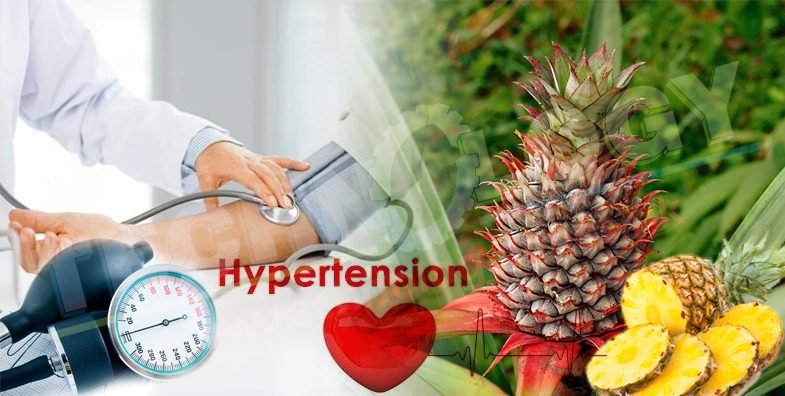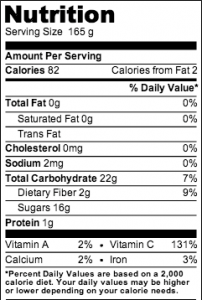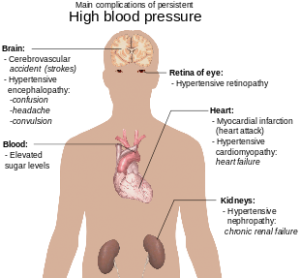 The pineapple (Ananas comosus) is a tropical plant with an eatable numerous organic product comprising of blended berries, likewise called pineapples, and the most financially noteworthy plant in the Bromeliaceae family. Pineapples might be developed from a crown cutting of the organic product, perhaps blossoming in 5-10 months and fruiting in the accompanying six months. Pineapples don’t mature fundamentally after harvest.
The pineapple (Ananas comosus) is a tropical plant with an eatable numerous organic product comprising of blended berries, likewise called pineapples, and the most financially noteworthy plant in the Bromeliaceae family. Pineapples might be developed from a crown cutting of the organic product, perhaps blossoming in 5-10 months and fruiting in the accompanying six months. Pineapples don’t mature fundamentally after harvest.
History of pineapples:
Antiquarians trust that the pineapple started in Brazil in South America. It was foreign made to Europe later. It is additionally trusted that Christopher Columbus and his group individuals were most likely the first individuals from the European landmass to have tasted the organic product. They imported the foods grown from the ground it in hot houses. Individuals from European regal families soon built up an enjoying it. It bit by bit ended up noticeably accessible to the rich, the honorable and the first class. James Dole did a considerable measure to promote the foods with his pineapple estates in Hawaii, his objective was to have the canned pineapple in each supermarket in the nation.
Top 5 Pineapple Producing Countries
Brazil, Thailand, Philippines, China are the fundamental pineapple producers on the planet providing 52% of the aggregate yield. Other potential producers includes, Nigeria, India, Kenya, Indonesia and Mexico.
Nutritional composition of pineapple:
Pineapple is the magnificent tropical natural product with excellent juiciness, energetic flavor and huge medical advantages. It contains an extensive measure of nutrients especially minerals and vitamins e.g. calcium, potassium, vitamin C that are useful for stomach related framework. It aides in keeping up perfect weight and adjusted nutrition. Pineapple does not increase body weight as it contains negligible amount of fat. Abundant amount of vitamins are present in pineapple (10-15mg). Pineapple structure has been researched mostly in the palatable bit. Pineapple contains 81.2 to 86.2% dampness, and 13-19% aggregate solids, of which sucrose, glucose, and fructose are the principal segments. Sugars speak to up to 85% of aggregate solids while fiber compensates for 2-3%. Of the natural acids, the citrus extract is the most plenteous in it.
 The mash has low burning debris content, nitrogenous mixes, and lipids (0.1%). Pineapple juice contains ascorbic acid that is a good source of Vitamin C. Ascorbic acid or vitamin C battles bacterial and viral contaminations which are a successful cancer prevention agents and helps the body to absorb iron. A large portion of some pineapple juice gives 50 percent of a grown-up’s day by day suggested measure of vitamin C. A few fundamental minerals exist in pineapples, including manganese, an important mineral helps in the development of bone, and additionally the creation and enactment of specific proteins. Pineapples likewise incorporate copper, another important mineral. It aids the assimilation of iron and directs pulse and heart rate.
The mash has low burning debris content, nitrogenous mixes, and lipids (0.1%). Pineapple juice contains ascorbic acid that is a good source of Vitamin C. Ascorbic acid or vitamin C battles bacterial and viral contaminations which are a successful cancer prevention agents and helps the body to absorb iron. A large portion of some pineapple juice gives 50 percent of a grown-up’s day by day suggested measure of vitamin C. A few fundamental minerals exist in pineapples, including manganese, an important mineral helps in the development of bone, and additionally the creation and enactment of specific proteins. Pineapples likewise incorporate copper, another important mineral. It aids the assimilation of iron and directs pulse and heart rate.
Health benefits of pineapple
 Effective solution for acne
Effective solution for acne
- Improves immune system
- Natural exfoliating agent
- Prevent free radical damage
- Strong bones
- Healthy gums
- Digestion
- Bronchitis
- Anti-inflammatory action
- Prevents hypertension
- Treat intestinal worms
- Relieves nausea
- Prevent arthrosclerosis
- Immunity
What is Hypertension?
Hypertension is unusual blood flow. A condition of extraordinary mental anxiety. Hypertension is known as the quiet slayer on the earth that in the many of cases, there are not many or no side effects among the primary stages of sickness. Symptoms may show up when there is organ damage or the force has achieved an abnormal state, of around 180/110 mm of Hg. 
It promotes:
- Heart attack
- Stroke
- Brittle bones
- Disturb Central Nervous System
- Disturbs Excretory System
The reason it is called hypertension is that it measures the force or pressure of your blood as it passes against the arteries when your heart pumps. In the process this pumping of blood goes high and high , this is hypertension and through the span of time, it makes harm to your body. Roughly one in three grown-ups in the U.S. have hypertension. That is sufficiently frightening, however, these same individuals have no side effects to warn them they have hypertension. It is conceivable to have hypertension for quite a long time and not know it. While this “quiet executioner” goes undetected, it can make harm to your:
- Heart
- Veins
- Kidneys
- Other body parts
Types of hypertension
There are two essential hypertension sorts. For 95 percent of individuals with hypertension, the reason for their hypertension is obscure this is called basic, or essential, hypertension. At the point when a cause can be found, the condition is called optional hypertension.
Fundamental hypertension:
This sort of hypertension is analyzed after a specialist notification that your circulatory strain is high on at least three visits and disposes of all different reasons for hypertension. Normally individuals with fundamental hypertension have no indications, however, you may encounter visit cerebral pains, tiredness, dazedness, or nose drains. Despite the fact that the cause is obscure, analysts do realize that heftiness, smoking, liquor, eating regimen, and heredity all assume a part in fundamental hypertension.
Auxiliary hypertension:
Most widely recognized reason for optional hypertension is a variation from the norm in the veins providing blood to the kidneys. Different causes incorporate restlessness, infections, and tumors of the adrenal organs, hormone variations from the norm, thyroid illness, and an excessive amount of salt or liquor in the eating routine.
Types of Hypertension
Malignant hypertension, isolated systolic hypertension and resistant hypertension are basic types of hypertension with distinctive features of concern.
Malignant hypertension:
This hypertension sort happens in just around 1 percent of individuals with high blood pressure. It is more typical in more youthful grown-ups, African-American men, and ladies who have pregnancy toxemia. This hypertension happens when your circulatory strain rises to a great degree rapidly. In the event that your diastolic weight goes more than 130, you may have malignant hypertension. This is an emergency and ought to be dealt with in a healing center or hospital. Side effects incorporate numbness in the arms and legs, blurred vision, perplexity, chest torment, and cerebral pain.
Isolated systolic hypertension:
Pulse is recorded in two numbers: The upper, or to start with, a number is a systolic weight, which is the pressure applied during the heart beat; the lower, or second, a number is the diastolic pressure , which is the pressure applied as the heart is resting between beats. The typical circulatory strain is considered under 120/80. With segregated systolic hypertension, the systolic weight exceeds 140, while the lower number remains close to the typical range, beneath 90. This sort of hypertension is most regular in individuals beyond 65 years old and is created by the loss of flexibility in the arteries.
Resistive hypertension:
In the event that your specialist has recommended three unique sorts of antihypertensive drugs and your pulse is still too high, you may have resistive hypertension. Resistive hypertension may happen in 20 to 30 percent of hypertension cases. Resistive hypertension may have a hereditary segment and is more typical in individuals who are more established, fat, female, African-American, or have a hidden disease, for example, diabetes or kidney disease.
Pineapple a cure to hypertension
In this article, we’ll be investigating the adequacy of pineapple eating regimen for bringing down hypertension. This includes why pineapple is useful for hypertension, and furthermore the diverse courses in which you can consolidate pineapple into your eating routine.
You may definitely realize that one of the best techniques to battle hypertension is a simple change in addition of – a more prominent serving of potassium and a lessened utilization of sodium. This prompts a general more advantageous and more adjusted pulse.
How pineapple lowers the risk of hypertension:
In the event that anybody experiences hypertension, he/she can take pineapple juice to bring down the danger of it. Pineapple juice comprises of bunches of vitamins and minerals. It contains many measures of potassium, and it diminishes the danger of it. The eating regimen can have a major effect on your circulatory strain. When you find a way to move toward a sound eating regimen, as a rule, you can deal with your hypertension. The pineapple diet with less carbs is said to help because of the way that it contains higher measures of potassium and lower measures of sodium. This is vital while overseeing hypertension. One measure of pineapple has just 1 mg of sodium and 195 mg of potassium. An added advantage to taking after the pineapple eating routine is that as a rule, you’ll likewise take off pounds sensibly. The connection between being overweight and having hypertension is solid, and the pineapple abstain from food enhances both.

Muhammad Azam, Muhammad Saeed, Nayyar Iqbal and Usama Asif
University of Agriculture Faisalabad, Pakistan

 Effective solution for acne
Effective solution for acne